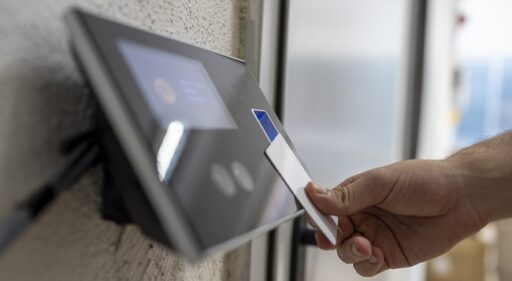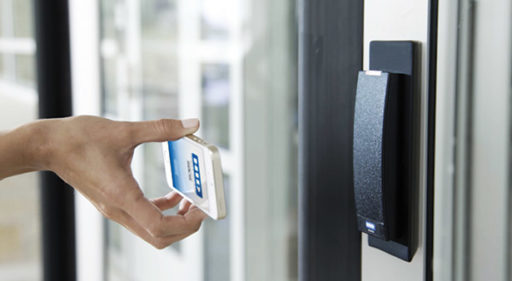
If you’ve ever had to perform inventory, you already know how tedious the overall process can be. If you’ve ever had to log missing products or supplies, then you know how frustrating it can be. And if you’ve ever had to access a secure location with your hands full, then you also know it can be a balancing act trying to find the right key while also juggling everything else in your hands. The good news is that there’s a far easier, more efficient method for asset tracking and for granting personnel access today and it involves the use of RFID, or radio frequency identification. In this post, we’ll discuss RFID tracking and how it can streamline asset tracking, access and more. Here’s a look:
How RFID Works
The nice thing about RFID tracking is that it’s an automatic identification and data capture technology. Specifically, the implementation of RFID tracking involves attaching smart RFID tags or labels to any product, key cards or piece of equipment that you want to track. These items are then read by an RFID scanner within the space, and data is captured and stored accordingly. It’s a far easier and more streamlined method of tracking items compared to scanning each item individually with a barcode, or performing other inventory or asset management in more conventional ways. RFID card door lock systems can also grant automatic entry and exit to approved personnel within a certain range. Just think of it as a smarter way to carry out access control.
There are two types of RFID tags that you can outfit products, key cards and items with: passive and active. Passive tags are smaller and tend to be less expensive, but they also have a smaller overall read range. They’re typically used to track a large number of smaller items. Access control systems, for example, would likely be outfitted with passive tags. Active tags, conversely, tend to be larger in size and with much larger read ranges, potentially ranges of more than 300 feet. Active tags are often used to track more significant investments, like vehicles, cargo, heavy equipment and more. Another nice thing about active RFID tags is that they can also measure environmental conditions, such as temperature and humidity.
How RFID Can Be Utilized
RFID tags can be used to quickly assess inventory, track assets and prevent theft. They’re utilized just as much for security purposes as they are for asset management, which makes them particularly beneficial everywhere from gate access control in parking lots and equipment yards to door systems. While there is an upfront cost associated with implementing RFID technology, it’s an investment that often more than pays off in time thanks to its security, efficiency and automation benefits – regardless of what you intend to use it for.
For more information on RFID technology and to learn more about RFID Proximity Card Door Lock Systems, contact Card Lock Company today.



